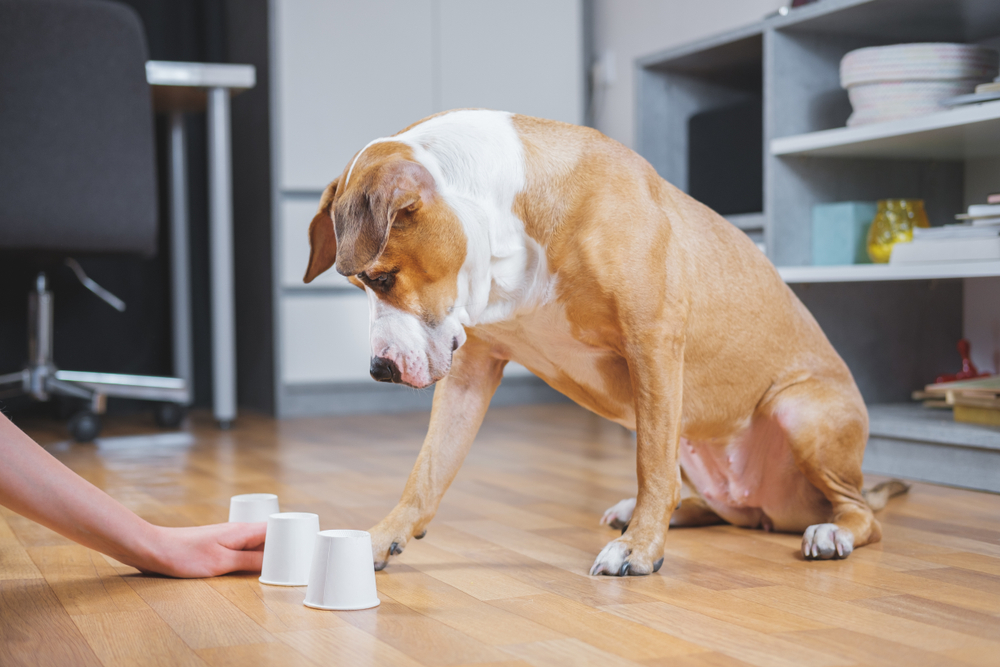Dogs Can Detect Parkinson’s Disease by Smell Years Before Symptoms Appear, With Up to 98% Accuracy, a New Study Finds
Last updated on
Imagine being able to smell a disease before a single symptom appears, before any medical scan can detect it, before a diagnosis is even considered. Now, imagine your dog doing that for you. Dogs have long been hailed as our loyal companions, protectors, and even emotional anchors. But what if their superpower lies not just in their loyalty, but in their extraordinary noses? With a sense of smell up to 10,000 times more sensitive than ours, dogs can detect a single drop of a substance diluted in enough water to fill 20 Olympic-sized swimming pools. It’s this unparalleled olfactory ability that’s placing them at the front lines of one of medicine’s most difficult challenges: diagnosing Parkinson’s disease early, accurately, and non-invasively. Parkinson’s, a progressive neurological disorder, often lurks in the body for years before revealing its hand. By the time tremors or stiffness appear, vital nerve cells are already significantly damaged. There’s currently no reliable early diagnostic test, and symptoms can be vague or mistaken for aging. But a new study reveals that dogs, trained to sniff out changes in skin secretions, can identify Parkinson’s with up to 98% specificity years before traditional diagnosis is possible. The story behind this discovery is part science, part serendipity, and part human perseverance with a powerful assist from man’s best friend.The Parkinson’s Discovery That Started with a Nose
The breakthrough in detecting Parkinson’s disease through scent didn’t begin in a laboratory it began with love, loss, and one woman’s uncanny sense of smell. Joy Milne, a retired nurse from Scotland, noticed something unusual about her husband, Les, long before doctors did. Years before he showed any visible symptoms of Parkinson’s, Joy picked up on a distinct change in his scent an unfamiliar, musky odor that clung to his skin and clothes. At first, she thought it was her imagination. But as time went on and Les was eventually diagnosed with Parkinson’s disease at just 45, Joy’s suspicion took root: what if this new smell was a symptom?Unlike most people, Joy has hyperosmia, a rare condition that gives her an exceptionally heightened sense of smell. Her observation born of daily, intimate contact with a loved one—would later spark an entirely new scientific inquiry. When she mentioned her experience to researchers at a Parkinson’s UK event, it set off a wave of curiosity. Could the disease be detected through body odor? More specifically, could there be a chemical signature in the skin secretions of Parkinson’s patients that dogs or even future diagnostic tools could be trained to identify? Sebum, the oily substance our skin naturally produces, became the focus. People with Parkinson’s often experience changes in skin and sebum production, sometimes years before motor symptoms like tremors or rigidity emerge. These changes, while invisible, emit volatile organic compounds (VOCs) that subtly alter a person’s scent. For someone like Joy or a highly trained dog these olfactory cues stand out. Joy’s experience directly inspired scientists, including Professor Perdita Barran at the University of Manchester, to investigate the link between Parkinson’s and scent. Her anecdotal insight has since helped fuel a growing body of research aimed at developing non-invasive, early-stage diagnostic methods, starting with simple skin swabs.Dogs Can Sniff Out Parkinson’s Disease
— Neuroscience News (@NeuroscienceNew) July 15, 2025
A groundbreaking study shows trained dogs can accurately detect Parkinson’s disease (PD) by smelling skin swabs.
In rigorous double-blind trials, the dogs achieved up to 80% sensitivity and 98% specificity, even when patients had other… pic.twitter.com/va9gHzDGJJ
The Study: Dogs Trained to Detect Parkinson’s

-
- One dog achieved 80% sensitivity (correctly identifying Parkinson’s samples) and 98% specificity (correctly rejecting non-Parkinson’s samples).
-
- The other achieved 70% sensitivity and 90% specificity.
Why Early Detection of Parkinson’s Matters

-
- Begin therapies that may slow neurodegeneration
-
- Make lifestyle adjustments (like exercise or diet) shown to support brain health
-
- Participate in clinical trials exploring neuroprotective treatments
-
- Plan proactively for care, career, and financial decisions
How Dogs Smell Disease and What Else They Can Detect

Diseases Dogs Are Known to Detect:
-
- Cancer: Dogs have been trained to identify several types of cancer including breast, lung, bladder, and skin cancer using breath, urine, or skin samples. One 2006 study found that trained dogs could detect lung cancer with 99% accuracy.
-
- Malaria: Dogs were able to correctly identify children infected with malaria 70% of the time just by sniffing socks the children had worn overnight.
-
- Diabetes: Diabetic alert dogs can detect isoprene, a chemical that rises in the breath during low blood sugar episodes, and alert their handlers before a crisis occurs.
-
- Epilepsy and Narcolepsy: Some dogs have been trained to detect biochemical changes before seizures or narcoleptic episodes occur, often giving minutes of warning that allow people to move to safety.
-
- Migraines: Dogs appear to notice a possible spike in serotonin, a chemical that surges before a migraine, which allows them to alert their owners before pain strikes.
-
- COVID-19: In several pilot studies, dogs successfully distinguished COVID-19-positive urine or sweat samples from negative ones, sometimes with accuracy comparable to PCR tests.
Dogs, Diagnostics, and Technology

Dogs as Partners in Health
For centuries, dogs have been protectors, guides, and confidants. Now, they’re emerging as something more: potential lifesavers. The discovery that dogs can detect Parkinson’s disease through scent years before symptoms appear is not just a scientific curiosity; it’s a powerful reminder of the intelligence and sensitivity embedded in nature. This research, rooted in a chance observation by Joy Milne and brought to life through the careful training of Bumper and Peanut, opens the door to a future where diagnosis is not only faster and more accurate but also gentler. Not a drop of blood, not a cut to the skin. Just a swab of skin and a nose trained to notice what we cannot. We’re still in the early stages. Larger studies are needed, and the path to clinical adoption may be long and cautious. But the foundations are in place. Whether through trained dogs or sensor-based “e-noses” that mimic them, the possibility of detecting Parkinson’s early before irreversible damage occurs is now more real than ever. What this tells us, beyond the science, is something deeply human: sometimes, the solutions to our most complex problems come from our oldest relationships. In the quiet diligence of a dog sniffing a sample, we are witnessing not just the future of diagnostics, but a renewed partnership between human and animal, instinct and innovation.Some of the links I post on this site are affiliate links. If you go through them to make a purchase, I will earn a small commission (at no additional cost to you). However, note that I’m recommending these products because of their quality and that I have good experience using them, not because of the commission to be made.

































 JOIN OVER
JOIN OVER
Comments